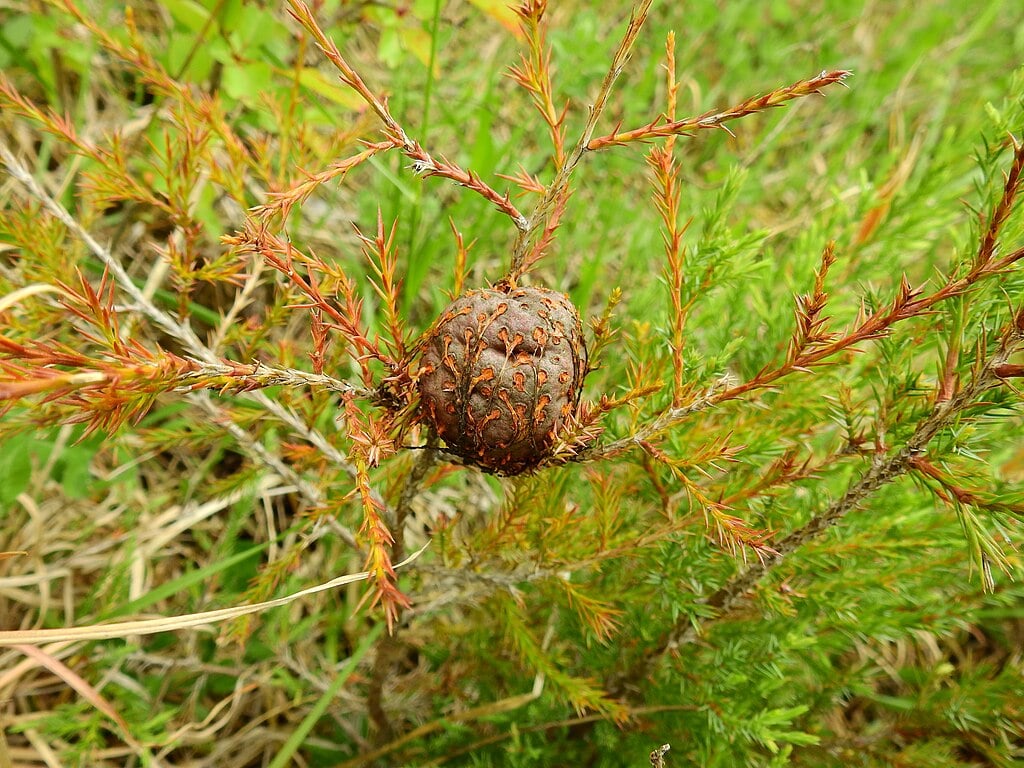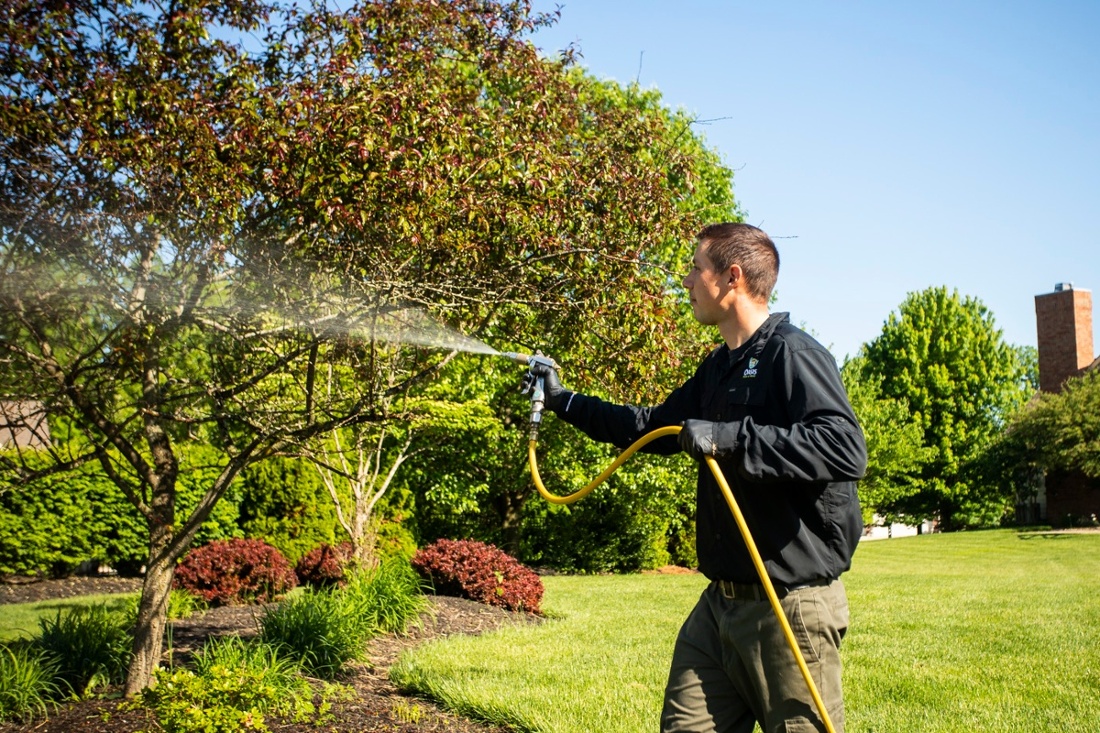Tree and shrub problems can be a huge source of frustration.
When your trees or shrubs are struggling, they can become an eyesore and you might worry about losing them. Unfortunately, just like your lawn, your landscape can be subject to a number of different diseases.
One common disease in our region is Cedar Apple Rust Fungus.
According to the Ohio State University Extension, Cedar Apple Rust Fungus is caused by the fungal pathogen Gymnosporangium juniperi-virginianae. This disease is called a “heteroecious rust fungus,” and it requires two hosts (primary and alternate) to complete its lifecycle.
Per Ohio State, the primary host is a juniper while the alternate host is an apple/crabapple. While you might not have both of these trees on your personal property, as long as they are within a mile of each other, the disease could rear its ugly head. That’s because the disease spores can be blown by the wind and infect susceptible crabapple or apple trees in the area.
In this article, we’ll talk about what you need to know about Cedar Apple Rust disease in Ohio and how to deal with it.
Cedar Apple Rust Symptoms
Cedar Apple Rust Fungus typically does not cause a lot of problems for the host juniper tree or shrub. Cedar Apple Rust symptoms typically emerge in early summer. You might notice small green or brown-colored swollen areas on the branches. Spore-producing structures of the pathogen can also form.
Brown-colored balls that form on an infected tree called “galls” are where the pathogen will overwinter.
Unfortunately, any apple or crabapple trees growing nearby can be more seriously affected.

Cedar Apple Rust symptoms on an apple or crabapple include yellow spots on the leaves. These will grow in size to larger orange/yellow spots. Leaves might also begin to drop prematurely.
You might also notice that the fruit of your trees is infected with lesions that give it a “spiky appearance.” These can lead to the fruit breaking open and falling from the tree.
Cedar Apple Rust Treatment
It’s important to keep in mind that Cedar Apple Rust is a common disease with a complex life cycle.
However, this disease is typically the largest threat to apple producers and orchard owners, as opposed to homeowners.
While we know many homeowners do have apple or crabapple trees on their property, they aren’t a source of income. Sometimes, removal can be the best option as crabapple or apple trees in the vicinity of a juniper are likely going to have repeated problems that simply might not be worth dealing with.

If you have a frequently disease-ravaged tree struggling to grow on your property, you’re probably in better shape choosing a species that is going to deal with fewer problems.
However, if you have a juniper on your property, the good news is that this disease is not overly harmful to this species.
While there are fungicides that can address Cedar Apple Rust Fungus our stance is that fungicides are generally too expensive to be worth it on a residential property.
Fungicides are expensive and will not correct damage that is already done. They will only prevent the disease from spreading further. It’s going to be less expensive to replace a severely infected plant than it is going to be to continually treat it with fungicides.
If you do not have a severe infection, you can try implementing some cultural recommendations such as raking up and disposing of fallen leaves and debris from your infected trees. You can also remove the galls from your infected junipers.
But sometimes, as we’ve said, making a new plant selection is your best option. Sometimes, plants are installed without realizing that they aren’t the best choice for your property or location. Since Cedar Apple Rust Fungus requires two host plants, and they don’t necessarily both need to be on your property, it can be especially complicated.
Your Plant Health Care Partner
Tree and shrub issues can be complex. But you don’t have to deal with them on your own.
Here at Oasis Turf & Tree, we offer plant health care services in Cincinnati, Dayton, OH and Northern Kentucky that will protect many plant species from various diseases, pests, and environmental stressors.
As part of that, we’re keeping a watchful eye on your plants and making recommendations as issues arise.
As a company, we have always been transparent with the information that we provide homeowners. And sometimes that means telling them that replacing their tree and shrub is a better option than dealing with an issue that’s not going to go away. That can sometimes be the case with Cedar Apple Rust Fungus.
But in many cases, we can help preserve the long-term health of plants so that you can continue to enjoy their value. By helping to keep a close eye on your landscape, we can take away your worries and become a partner in your plants’ care.
If you want to find out more about tree and shrub health care for your Cincinnati, Dayton, OH, or Northern Kentucky home, call us today at 513-697-9090 to get your quote, let us help you choose a stand-alone Plant Health Care program or bundle it with other valuable services, then sit back and relax knowing that your trees and shrubs are in good hands.
Image Source: cedar apple rust
